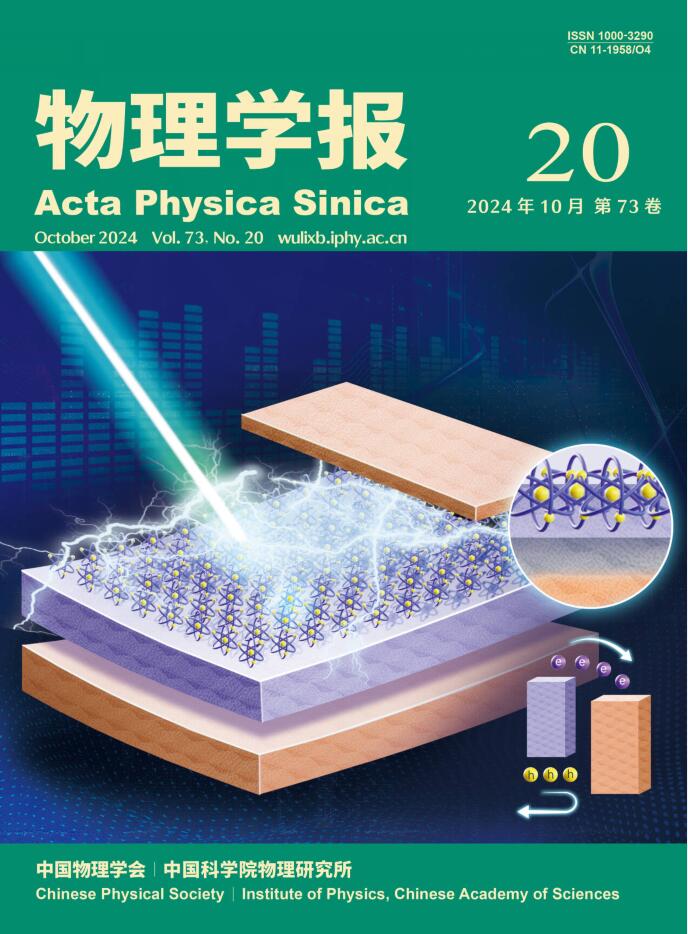Advance of lithium-rich cathode materials in all-solid-state lithium batteries
IF 0.8
4区 物理与天体物理
Q3 PHYSICS, MULTIDISCIPLINARY
引用次数: 1
Abstract
The development of all-solid-state lithium batteries with high energy density, long cycle life, low cost and high safety is one of the important directions for the development of next-generation lithium-ion batteries. Lithium-rich cathode materials have been widely used in liquid lithium batteries for their higher discharge specific capacity (> 250 mAh g-1) and energy density (> 900 Wh kg-1), due to the synergistic redox of anions and cations, as well as their high thermal stability and low raw material cost. With the rapid development of high-performance lithium-rich cathode materials and solid-state electrolytes in all-solid-state lithium batteries, the application of lithium-rich cathode materials in all-solid-state lithium batteries is expected to break through to the target of 500 W h kg-1 energy density of lithium-ion batteries. In this review, we firstly elaborate the failure mechanism of lithium-rich cathode materials in all-solid-state lithium batteries. The poor electronic conductivity, irreversible redox reaction of anionic oxygen and structute transformation during the electrochemical cycling of lithium-rich cathode materials lead to the low initial coulomb efficiency, poor cycling stability and voltage decay. In addition, the high operating voltage of lithium-rich cathode materials (> 4.5 V vs. Li/Li+) exposes the cathode/electrolyte to not only conventional interfacial chemical reactions, but the released oxygen also aggravates the interfacial electrochemical reactions, which put higher demands on the interfacial stability of the cathode/electrolyte. Therefore, the intrinsic characteristics of lithium-rich cathode materials and the severe interfacial reaction of lithium-rich cathode/electrolyte greatly limit the application of lithium-rich cathode materials in all-solid-state lithium batteries. Then, we review the research progress of lithium-rich cathode materials in various solid-state electrolyte systems in recent years. The higher room temperature ionic conductivity and wider voltage window of inorganic solid-state electrolytes provide opportunities for the application of lithium-rich cathode materials in all-solid-state lithium batteries. At present, the application of lithium-rich cathode materials in all-solid-state lithium batteries has been initially explored on the basis of sulfide, halide and oxide solid-state electrolyte systems, and important progress has been made in studies including composite cathode preparation methods, interfacial reaction mechanisms and activation mechanisms. Finally, we summarize the current research focus of lithium-rich cathode all-solid-state lithium batteries and propose several strategies for their future outlook. Strategies such as the regulation of cathode material components, the construction of lithium ion and electron transport pathways within the composite cathode, and the interfacial modification of cathode materials have been shown to have significant effects in solving the failure problem.全固态锂电池中富锂正极材料研究进展
开发高能量密度、长循环寿命、低成本、高安全性的全固态锂电池是下一代锂离子电池发展的重要方向之一。富锂正极材料由于阴离子和阳离子的协同氧化还原作用,具有较高的放电比容量(> 250mah g-1)和能量密度(> 900wh kg-1),以及较高的热稳定性和较低的原料成本,已广泛应用于液体锂电池中。随着全固态锂电池中高性能富锂正极材料和固态电解质的快速发展,全固态锂电池中富锂正极材料的应用有望突破到锂离子电池500w h kg-1能量密度的目标。本文首先阐述了全固态锂电池中富锂正极材料的失效机理。富锂正极材料在电化学循环过程中的电子导电性差、阴离子氧不可逆氧化还原反应和结构转变导致其初始库仑效率低、循环稳定性差和电压衰减。此外,富锂正极材料的高工作电压(> 4.5 V vs. Li/Li+)不仅使阴极/电解液暴露在常规的界面化学反应中,而且释放的氧气也加剧了界面电化学反应,这对阴极/电解液的界面稳定性提出了更高的要求。因此,富锂正极材料的固有特性和富锂正极/电解质剧烈的界面反应极大地限制了富锂正极材料在全固态锂电池中的应用。综述了近年来在各种固态电解质体系中富锂正极材料的研究进展。无机固态电解质具有较高的室温离子电导率和较宽的电压窗,为富锂正极材料在全固态锂电池中的应用提供了机会。目前,在硫化物、卤化物、氧化物固态电解质体系的基础上,对富锂正极材料在全固态锂电池中的应用进行了初步探索,在复合正极制备方法、界面反应机理、活化机理等方面的研究都取得了重要进展。最后,总结了目前富锂阴极全固态锂电池的研究热点,并对其未来前景提出了几点展望。阴极材料组分的调控、复合阴极内锂离子和电子传递路径的构建、阴极材料界面的修饰等策略已被证明对解决失效问题有显著效果。
本文章由计算机程序翻译,如有差异,请以英文原文为准。
求助全文
约1分钟内获得全文
求助全文
来源期刊

物理学报
物理-物理:综合
CiteScore
1.70
自引率
30.00%
发文量
31245
审稿时长
1.9 months
期刊介绍:
Acta Physica Sinica (Acta Phys. Sin.) is supervised by Chinese Academy of Sciences and sponsored by Chinese Physical Society and Institute of Physics, Chinese Academy of Sciences. Published by Chinese Physical Society and launched in 1933, it is a semimonthly journal with about 40 articles per issue.
It publishes original and top quality research papers, rapid communications and reviews in all branches of physics in Chinese. Acta Phys. Sin. enjoys high reputation among Chinese physics journals and plays a key role in bridging China and rest of the world in physics research. Specific areas of interest include: Condensed matter and materials physics; Atomic, molecular, and optical physics; Statistical, nonlinear, and soft matter physics; Plasma physics; Interdisciplinary physics.
 求助内容:
求助内容: 应助结果提醒方式:
应助结果提醒方式:


